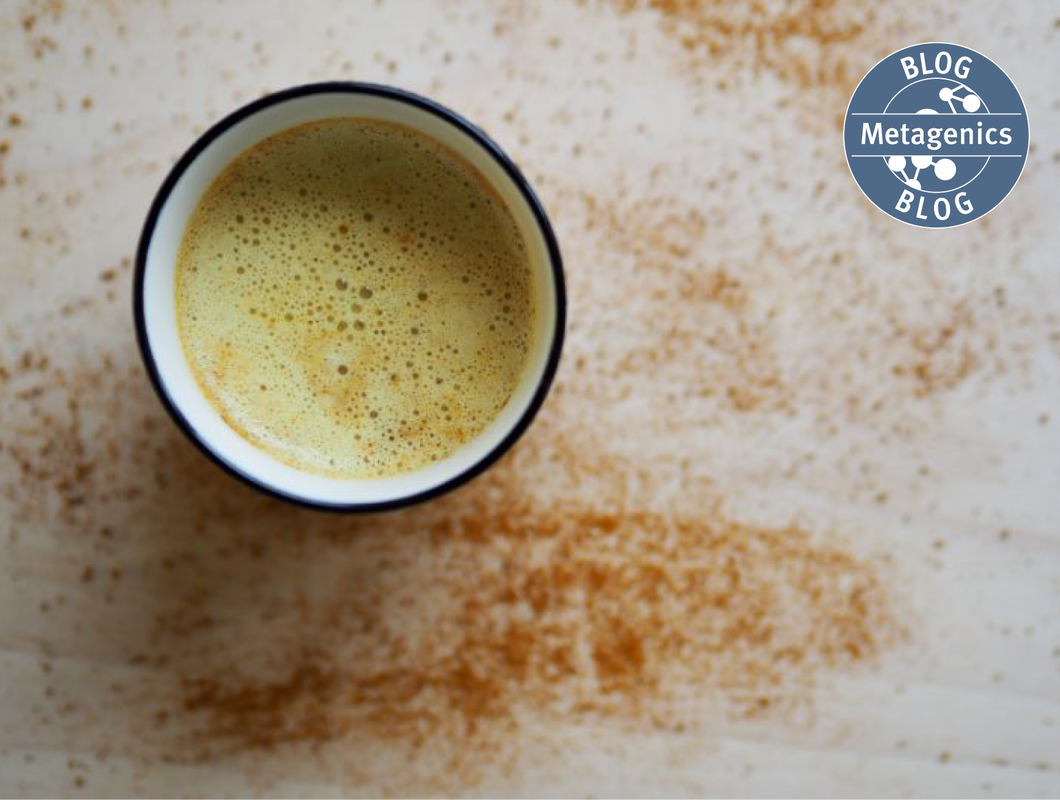|
by Whitney Crouch, RDN, CLT
What is Golden Milk? Popularized across social media, golden milk is a cross-cultural drink originating in Asian countries and consumed for its anti-inflammatory properties and pungent flavor. Also known as “golden milk latte” or “turmeric tea”, golden milk is made with freshly grated or ground turmeric, a pinch of freshly ground pepper, honey or lemon to taste, and hot water, milk, or dairy alternative.1-2 The addition of freshly grated or ground ginger adds extra flavor and additional anti-inflammatory characteristics, with cinnamon, cardamom, cloves and nutmeg rounding out the flavor.1-2 The Golden Milk “MVP”: Turmeric While turmeric is the star of the show with its golden color and unique flavor, golden milk is a purposefully designed elixir including ingredients that aid in the absorption and delivery of turmeric’s polyphenolic compound, curcumin, the primary curcuminoid found in turmeric. Curcumin is a poorly absorbed compound on its own, but the addition of piperine, the active ingredient in black pepper, increases the absorption by approximately 2,000%.3 Another well-designed feature of the golden milk beverage involves the use of whole fat milk or added fat (such as coconut milk or oil) to facilitate improved bioavailability of the fat-loving (lipophilic) curcuminoid phenols; leveraging a lipophilic design has been shown to allow for greater bioaccessibility of curcuminoids.4 Golden Milk and Arthritis Arthritis is an inflammatory condition characterized by swollen, painful joints. It affects children and adults and presents in many forms – autoimmune rheumatoid arthritis, osteoarthritis, and infectious arthritis, to name a few.5-6 While each condition has a different etiology, the clinical presentation includes stiff joints, muscle aches and pains, fatigue, rigidity, and inability to use the affected limb(s).5-6 Sometimes called degenerative joint disease, osteoarthritis (OA) is the most common chronic condition of the joints, affecting approximately 27 million Americans.5 OA can affect any joint, but it occurs most often in knees, hips, lower back and neck, small joints of the fingers and the bases of the thumb and big toe.5 In OA, the cartilage breaks down, causing pain, swelling and problems moving joints.5 Rheumatoid arthritis is an autoimmune disease in which the body’s immune system – which normally protects its health by attacking foreign substances like bacteria and viruses – mistakenly attacks the joints. Since this is a systemic condition, it may also affect organ and body systems.6 Turmeric (Curcuma longa) is a rhizomatous perennial plant of the ginger family.7 Curcumin, the medicinal compound found in turmeric root, has been used for thousands of years, but has only recently been studied extensively. A curcuminoid polyphenol (also called diferuloylmethane), curcumin has been used medicinally in Asian countries for its antioxidant, anti-inflammatory, anti-microbial, anti-mutagenic, and anti-cancer properties.8 Typical anti-inflammatory medications are successful in blocking the pro-inflammatory COX pathway, while curcumin’s benefits are seen via inhibiting actions of both COX and LOX enzymes, prostaglandins, and leukotrienes.9 Unlike many non-steroidal anti-inflammatory drugs (NSAIDs), curcumin does not irritate the gastric lining when taken with food.10 Recent studies have examined the role of curcumin in the gut, specifically its interaction with the gut microbiota. Highly concentrated amounts of curcumin have been used as a standalone or adjunct approach to many clinical conditions. Until recently the dose of curcumin ingested through daily food intake and its clinical relevance was not well understood. Oral administration of curcumin is beneficially involved in many health processes, including those underlying osteoarthritis and rheumatoid arthritis.11 Limited bioavailability and inability to detect curcumin in circulation or target tissues has hindered the validation of a causal role, however studies suggest the relationship between curcumin, microbiota, and gut tissue to be at the base of improved overall health and reduced inflammation with dietary intake of turmeric.12 In their review of current studies, Gosh, et al. theorize that the mechanism underlying the attenuation of metabolic dysfunction is a curcumin-mediated decrease in the release of gut bacteria-derived lipopolysaccharide (LPS) into blood circulation, by maintaining the integrity of the intestinal barrier function.12 In this role, lacking extensive systemic circulation, curcumin reduces the release inflammatory LPS molecules, thereby protecting several layers of the intestinal barrier.12 While the data on curcumin’s role in supporting healthy joints and combating arthritis is growing, it should be noted that the clinically effective doses studied range from 1000-1500 mg/day of curcuminoids. The typical golden milk recipe includes 0.5-3 teaspoons of turmeric, or approximately 3-9 grams of ground turmeric root.1-2,14 With the lower bioavailability of dietary curcumin, and the curcumin content of the turmeric root averaging 3.14% by weight,13 actual curcuminoid intake per golden milk drink ranges from 0.05-0.28 mg when preparing it with 0.5-3 teaspoons of turmeric (based on simple math). Golden milk tea is a wellness-promoting drink that should be incorporated into a nutrient dense, anti-inflammatory diet and lifestyle. While higher, more targeted doses of curcumin may be necessary to promote clinically significant changes in arthritic pain outcomes, the sum of all diet and lifestyle parts should be considered when approaching inflammation from a more natural, holistic perspective. References:
Whitney Crouch, RDN, CLT Whitney Crouch is a Registered Dietitian with a BS in Clinical Nutrition from the University of California, Davis. She has over 10 years of experience across multiple areas of dietetics, specializing in integrative and functional nutrition and food sensitivities. When she’s not writing about nutrition or educating others, she’s spending time with her husband and young son. She’s often found running around the bay near her home with the family’s dog or in the kitchen cooking up new ideas to help her picky eater expand his palate.
0 Comments
Leave a Reply. |
Categories
All
Archives
April 2024
|
|
Join Our Community
|
|
Amipro Disclaimer:
Certain persons, considered experts, may disagree with one or more of the foregoing statements, but the same are deemed, nevertheless, to be based on sound and reliable authority. No such statements shall be construed as a claim or representation as to Metagenics products, that they are offered for the diagnosis, cure, mitigation, treatment or prevention of any disease. |



 RSS Feed
RSS Feed